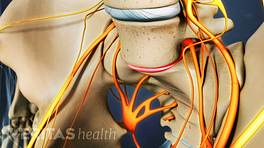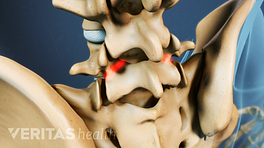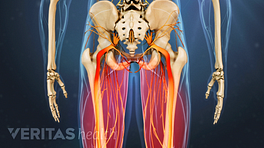Isthmic spondylolisthesis is a lumbar spinal condition in which a fracture of the isthmus causes one vertebral body to slip forward on top of the vertebral body below it.
The isthmus, or pars interarticularis, is a small, thin segment of bone that connects the facet joints at the back of the spine.
A fracture of the isthmus, known as a spondylolysis, is usually a result of stress to the spine.
A spondylolysis can, but does not always lead to slippage of the vertebrae, known as spondylolisthesis.
Isthmic spondylolisthesis most commonly occurs at the lowest level of the lumbar spine, the L5-S1 segment. Spondylolisthesis is graded on a scale from 1 to 4, measuring how far one vertebra has slipped forward on another.
Isthmic spondylolisthesis does not always cause immediate symptoms of pain. When it does, it usually manifests as a deep ache in the lower back.
Pain from isthmic spondylolisthesis tends to be worse when standing or walking, or during activities that involve bending backward. There may be tightness in the hamstrings.
Sometimes, the disc space between the two vertebrae can wear out. The resulting compression of nerve roots leads to radiating pain, numbness, or weakness in the legs.
Isthmic spondylolisthesis is a fairly common condition among young athletes.










